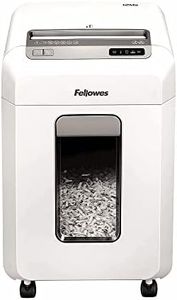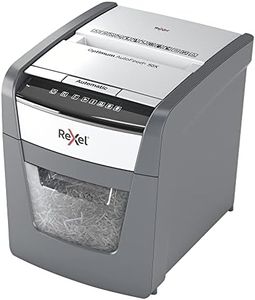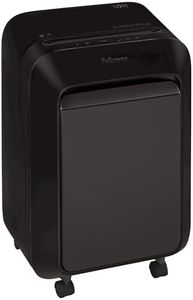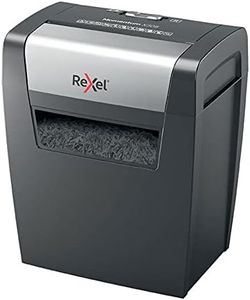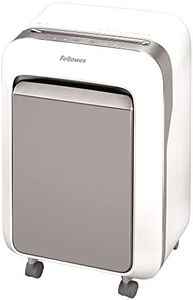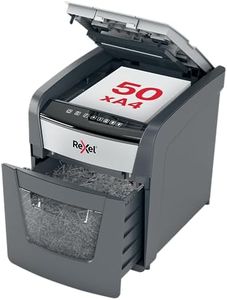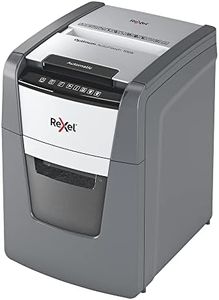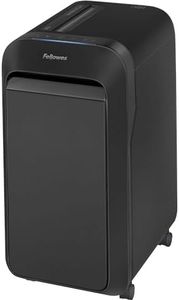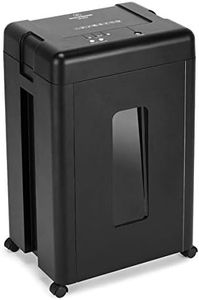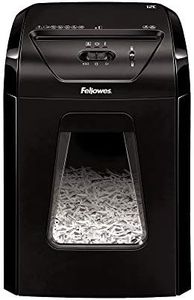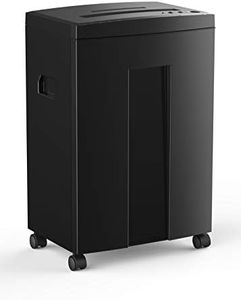We Use CookiesWe use cookies to enhance the security, performance,
functionality and for analytical and promotional activities. By continuing to browse this site you
are agreeing to our privacy policy
10 Best Heavy Duty Shredders
From leading brands and best sellers available on the web.Buying Guide for the Best Heavy Duty Shredders
Choosing a heavy-duty shredder is an important decision, especially if you need to handle large volumes of paper, sensitive documents, or even unique materials in an office or organization. These machines are built to process more than standard personal shredders, and selecting the right one will depend on the specific tasks, frequency of use, and the types of materials you intend to shred. Before you shop, have a clear understanding of your day-to-day shredding needs to ensure you end up with a machine that is not only powerful enough, but also efficient and safe for your environment.Sheet CapacitySheet capacity refers to the maximum number of paper sheets a shredder can handle in a single pass. This spec is crucial because it determines how quickly you'll be able to process documents. Sheet capacity typically ranges from about 10 sheets per pass for lighter duties up to 50 sheets or more for heavy-duty shredders. If you frequently need to shred thick stacks, look for higher capacities. However, higher sheet capacity models are often bigger and use more power, so make sure the machine matches the volume and space you have.
Run Time and Cool Down PeriodThe run time tells you how long a shredder can continuously operate before it needs to cool down, while the cool down period is the length of time required before it can be used again. Heavy-duty shredders will offer longer run times (sometimes upwards of an hour or more), which is important if you anticipate continuous use or large batch shredding. For light, occasional use, shorter run times may suffice, but for non-stop office tasks, consider a model with the longest possible run time and shortest cool down.
Shred Type and Security LevelShred type describes how the shredder cuts documents—strip-cut, cross-cut, or micro-cut—while the security level indicates how small the pieces are. Strip-cut shredders destroy documents into long strips, providing basic security. Cross-cut and micro-cut shredders provide higher security by creating smaller pieces, making them better for sensitive information. If you work with confidential documents, always focus on a higher security level. If you’re mostly shredding non-sensitive paperwork, a lower security type may be just fine.
Bin CapacityBin capacity is the volume (usually in gallons or liters) of the container that catches shredded material. A larger bin means you can shred more before needing to empty it, which is ideal for heavy use in busy offices. For occasional use, a smaller bin might be adequate, but for environments with lots of paper waste, aim for the biggest and most easily accessible bin you can fit into your space.
Material VersatilityMaterial versatility indicates what a shredder can actually handle—beyond paper, some heavy-duty models can process staples, paper clips, credit cards, CDs, and cardboard. If your workflow includes mixed materials, look for a shredder specifically rated for those items. Trying to shred materials not suited to the machine can cause jams or damage, so think about everything you’ll need to destroy regularly.
Noise LevelNoise level is measured in decibels and reflects how loud the shredder is during operation. For shared or quiet workspaces, a quieter shredder can help keep the environment comfortable. If the shredder will be placed in a separate area or only used occasionally, noise may be less of a concern. It’s always good to compare the manufacturer’s listed sound ratings with your own tolerance or your office’s needs.
Safety FeaturesSafety features include mechanisms that prevent accidents, such as automatic shut-off, safety guards, or sensors that detect hands and stop operation. These are essential if the shredder will be used in environments with many people or where accidental injury is a risk. Evaluate your workspace and user base to determine what safety features are critical for you.

